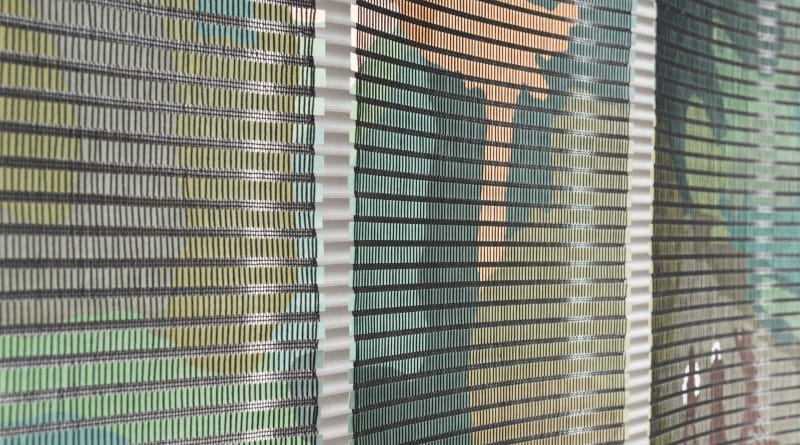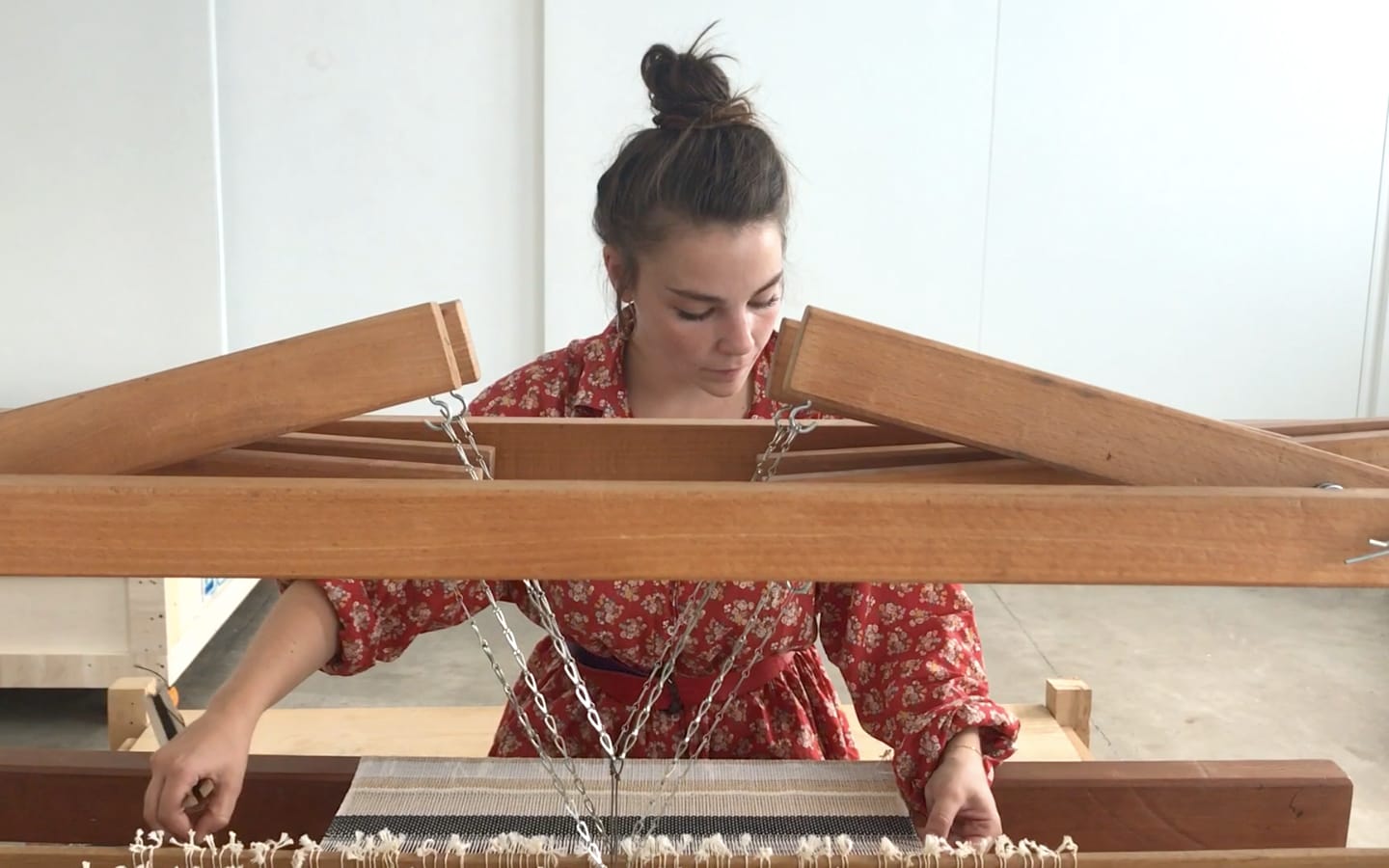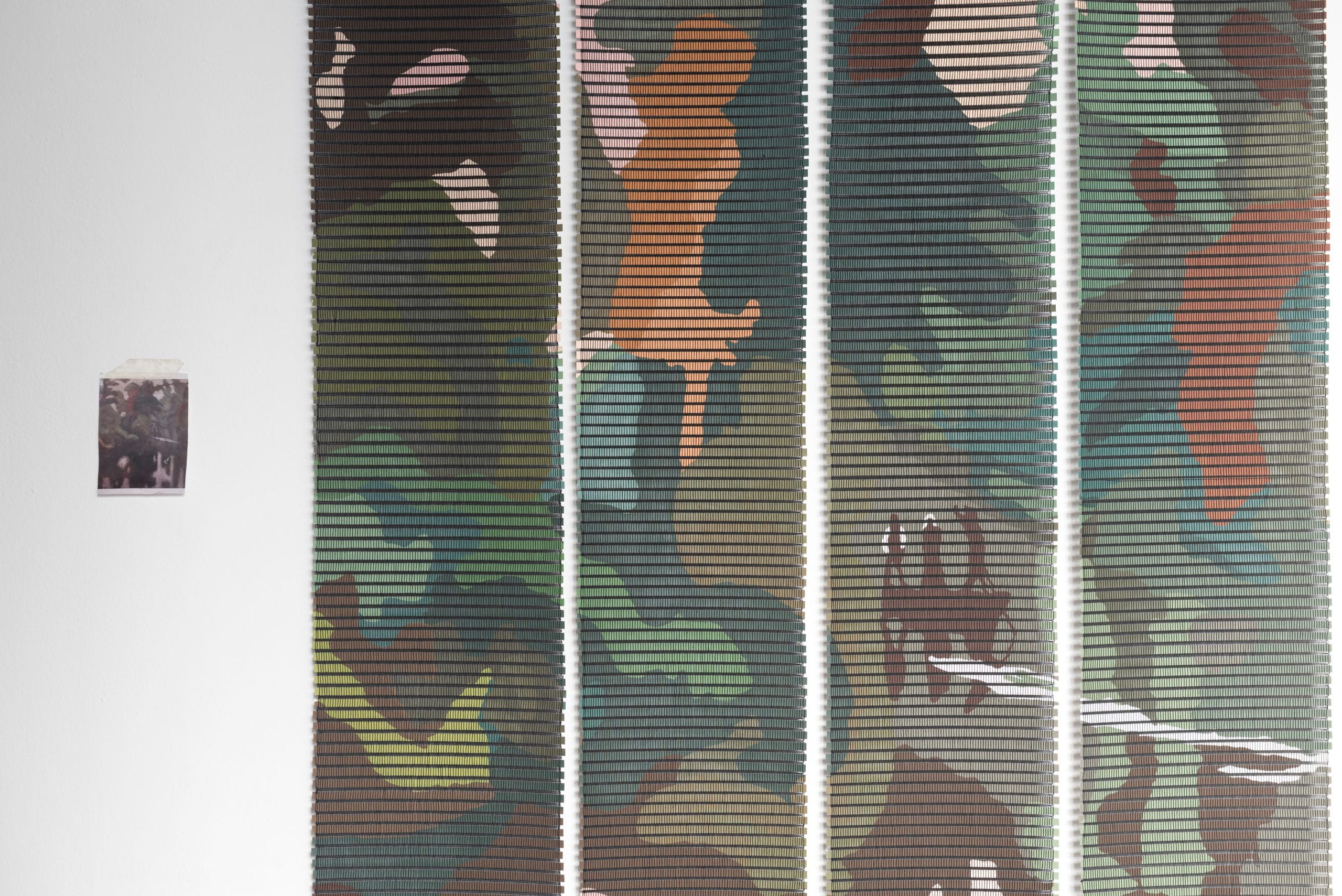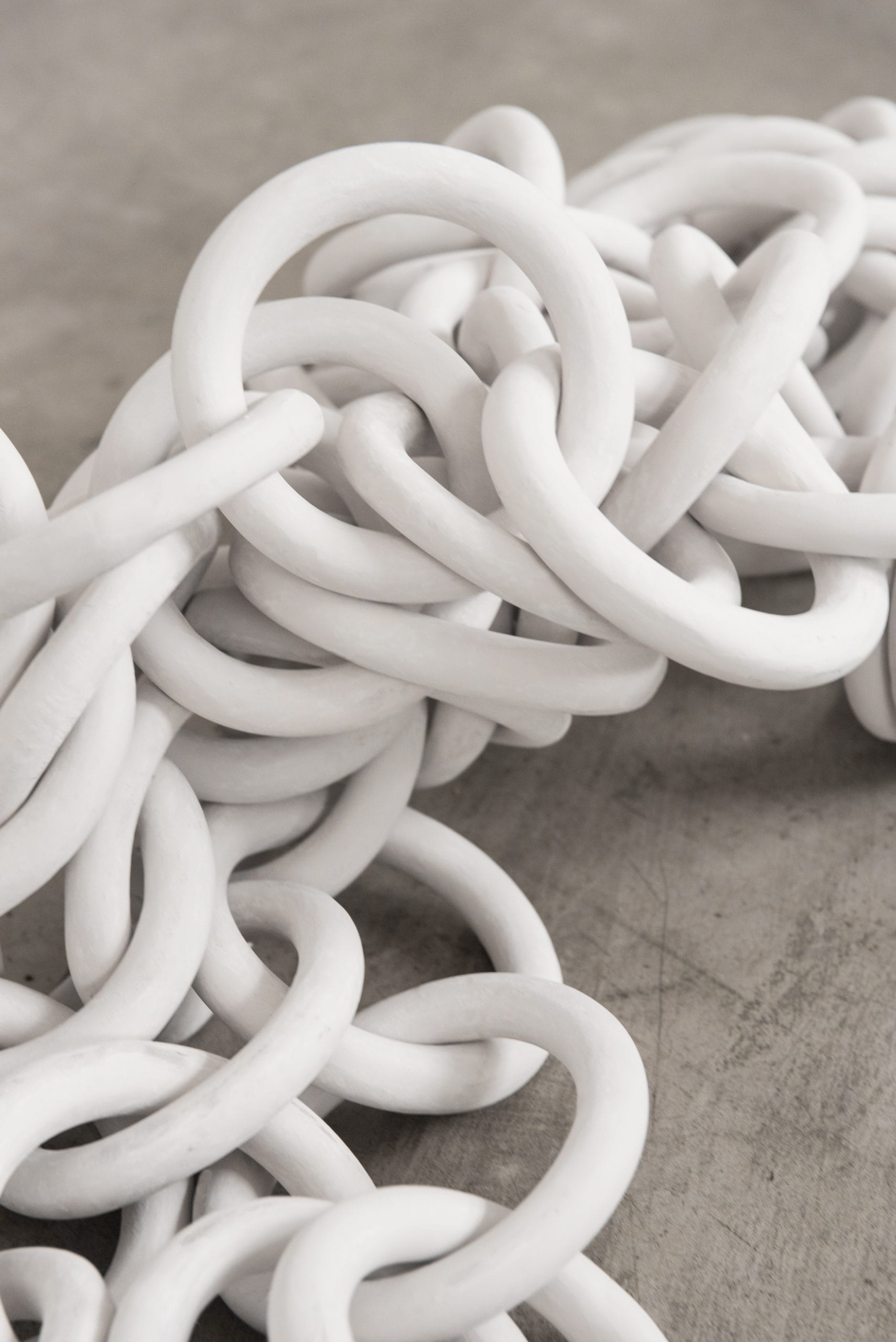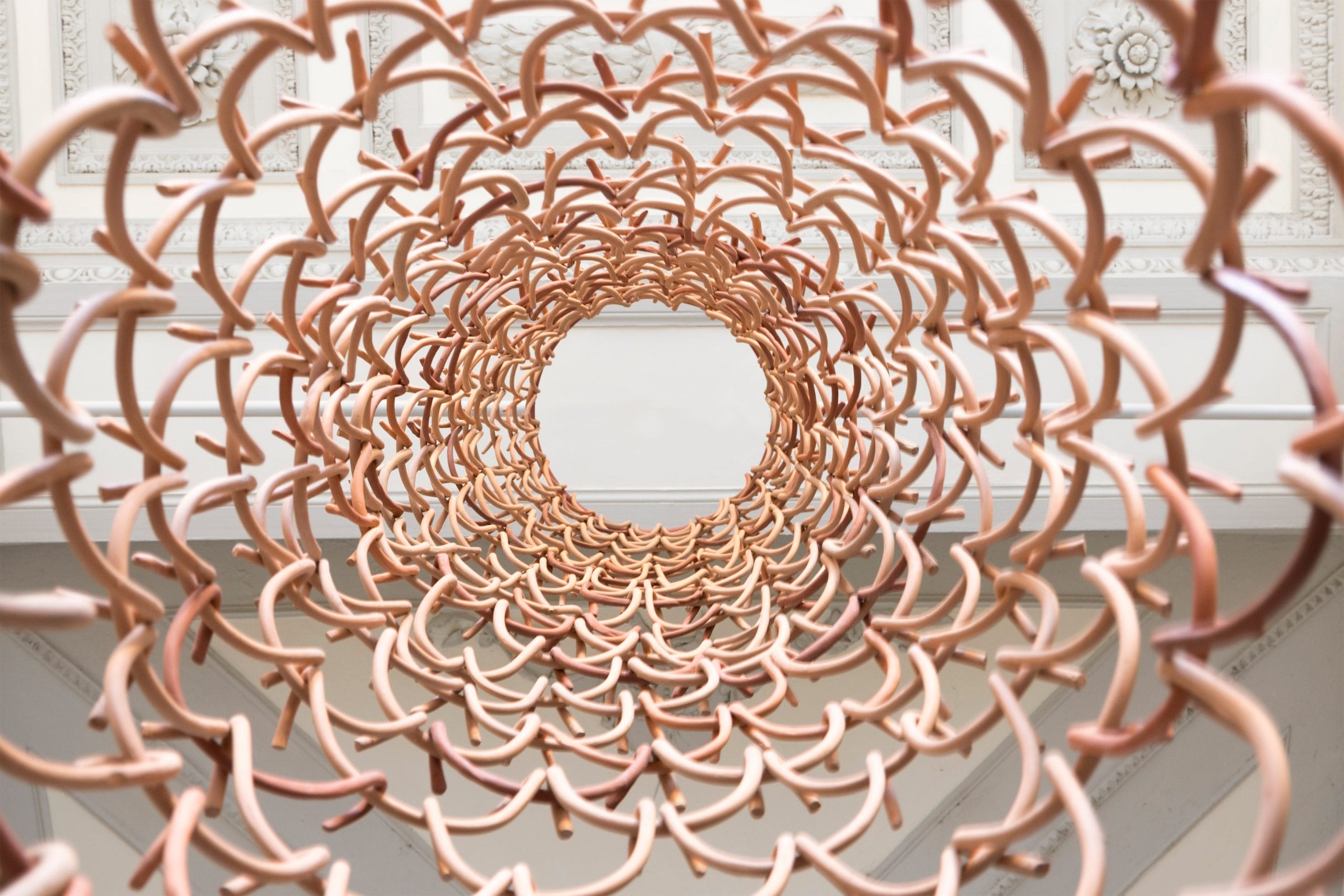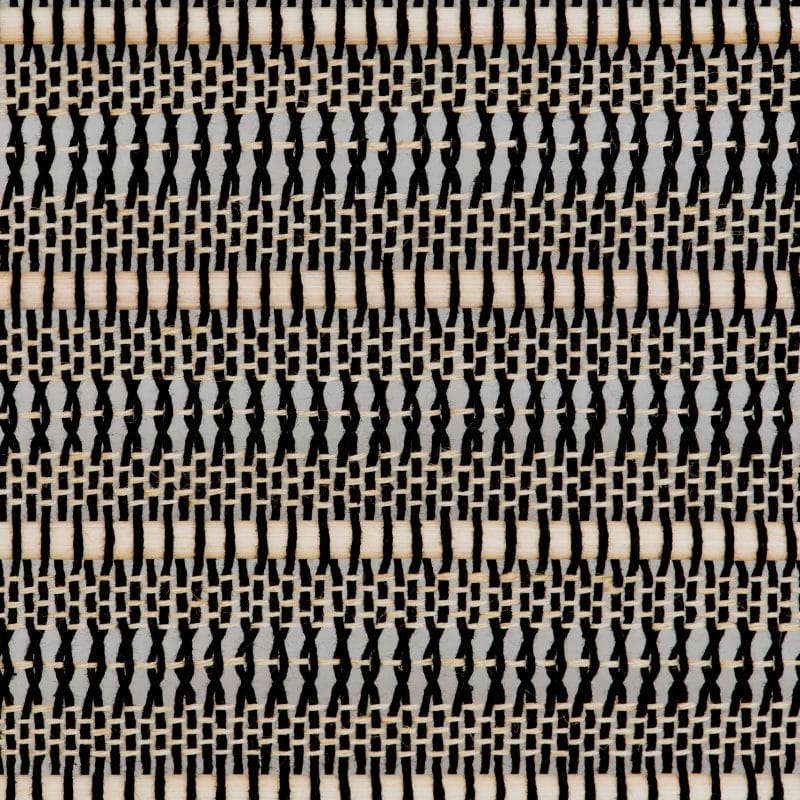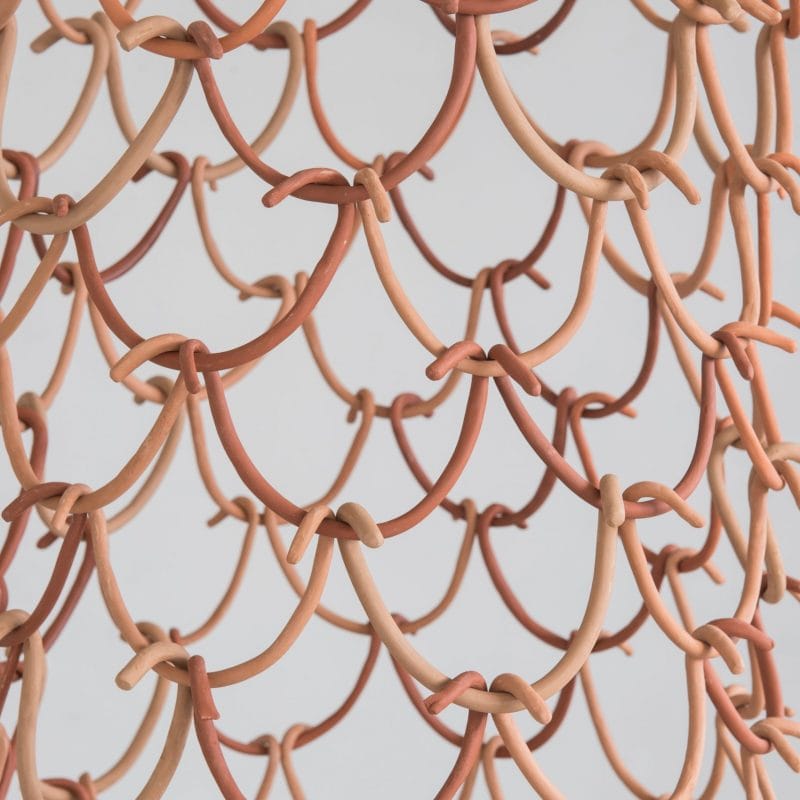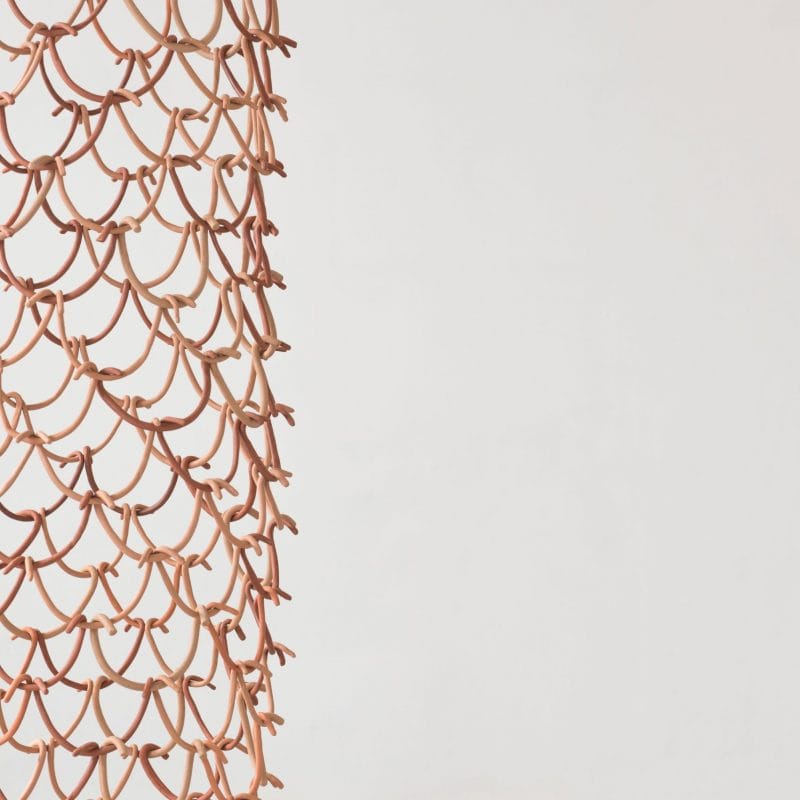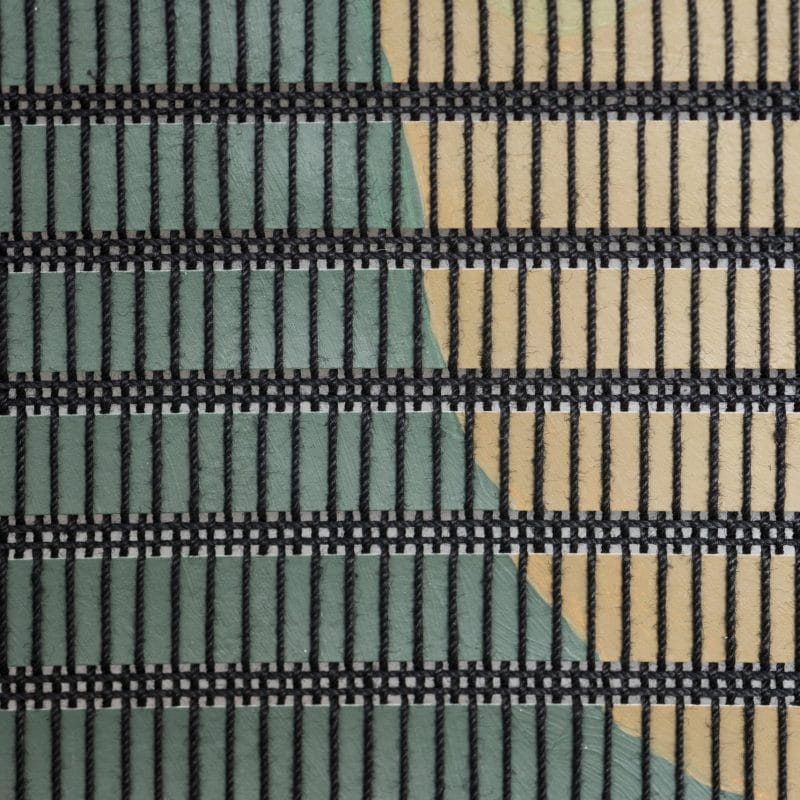INTERVIEW WITH CARLOTTA MANSI
*Featured photo: “Winter in Worpswede mit Otto Moderson” Paper, Acrylic, black cotton cablè, 2019. Ph. Credit Cosimo Quartana
Carlotta Mansi is among the young talents whose works are on display in the current edition of TRAMANDA, she is an artist who experiments with a plurality of materials through textile techniques.
She graduated from the Brera Academy of Fine Arts. After training at Kensington and Chelsea College London and at the Universität der Künste Berlin, she studied weaving techniques with Paola Besana in Milan and Graziella Guidotti in Florence.
Her works have been selected in international contests and exhibition projects at Superstudio and at the Aurelia Josz Botanical Museum in Milan, at the Heinrich-Vogeler-Museum in Worpswede (Germany) just to name but a few.
On show at this edition of TRAMANDA is your work “Winter in Worpswede mit Otto Modersohn”, a work in which many elements are intertwined – different techniques such as painting and weaving, the quotation of a broken down and recomposed artwork. Tell me about this work – how did it come about, what inspired it, what meanings and reflections does it convey?
“Winter in Worpswede mit Otto Modersohn” is a work created during a residence in Worpswede, a small town in Lower Saxony, where in the late 1800s and early 1900s, three artists, including Otto Modersohn, set up an art group that went against the academic ideals of the time, seeking direct contact with nature and a rural lifestyle. Today Worpswede is a tourist destination for wealthy pensioners, full of modern art museums and also some contemporary art.
In the bookshop of the Worpsweder Kunsthalle for the first time I saw the painting “Winter in Worpswede” by Otto Modersohn, it was depicted on a 1 euro postcard, those museum souvenirs you buy but never actually send, and I did the same.
On the return journey, looking back at my ill-advised purchase, I realized that I had not actually seen the original work, but that its representation in merchandising format struck me deeply.
The next day I returned with the intention of seeing the painting and did not find it, the work was not part of the museum and was actually on display in another collection in Bremen despite having the same title.
At that moment, I felt a sort of deep connection with the work and even more so with its representation in 15×10.5 cm, as if the painting had been lost and the postcard was the only artifact (if reissued).
“Winter in Worpswede mit Otto Modersohn” (Winter in Worpswede with Otto Modersohn) originates from this and revolves around the concept of the authenticity of direct experience with the work of art.
I decided to reproduce the work on paper, breaking it down and reassembling it again by inserting it as the weft of a black cotton warp so that I could in turn recreate and reproduce the reproduction itself, using weaving which is intrinsically suited to reproduction in large quantities; there are several copies of fabric just as there are several postcards.
The result is a 170×200 cm fabric displayed alongside the postcard.
“Winter in Worpswede mit Otto Modersohn” was included in the exhibition “Resonanzen II” curated by Jörg van den Berg and Beate Arnold and displayed at the Worpswede Museum.
For the occasion, the curators asked and obtained the original painting “Winter in Worpswede” on loan, which was displayed in front of my work.
“contre-jour col.004”, hand-dyed cotton warp and weft printing, cm700 x cm70, 2020. Ph. Credit Cosimo Quartana
From paper as a weaving element, you have moved on to clay in other works (the Mimesis series, for example) in which textile forms and sculptural volumes intertwine. What is the origin of these works and where does this experimentation lead?
I used paper specifically in “Winter in Worpswede mit Otto Modersohn” because it was the starting material for my research, the postcard.
My artistic practice is fundamentally based on two media: the use of weaving and the manipulation and structuring of clay in series.
The two techniques, which are very distant from each other, actually present various similarities in their methodological and project-based specificity: the manipulation of clay takes on, in my specific use, characteristics that are typical of frame design. It is therefore possible to “weave clay” as well as “manipulate fabric”.
Quoting Paola Besana: “The weaver is a constructor, not a decorator: for him, motifs are not repetitions of existing iconographies, but results of the use of textile structures and therefore his work increasingly relates to strong expressions of art such as sculpture and architecture”.

““Winter in Worpswede mit Otto Moderson” Paper, Acrylic, black cotton cablè, 2019. Ph. Credit Cosimo Quartan
For your research, how important is experimenting with techniques and materials?
At the moment the aspect of technical study in my research is fundamental, especially in weaving, where only through an in-depth knowledge of technique is it possible to experiment in order to go beyond technicality.
But it is also true that sometimes you think with your hands, and therefore from the study of new techniques as well as from the use of new materials you make extraordinary and pleasant mistakes that give life to new things.
“Winter in Worpswede mit Otto Moderson” Paper, Acrylic, black cotton cablè, 2019. Ph. Credit Cosimo Quartana
What is the reason behind your choice of textiles as means of expression? What characteristics make it suitable for your artistic research?
There is no particular reason (despite I originally come from Como). What has always fascinated me about weaving is how it has developed equally in various parts of the world and with its own characteristics, developing a real language, with nuances, accents, dialects, this is the way weaving uses materials, colors and techniques thus establishing the various cultural origins and needs.
Weaving is methodical; before composing fabric with a loom, I plan by putting the design on paper, choosing the right frames, calculating the necessary warp with its leakages in the frame… planning! Planning is what I like doing.
“mimesis n.4”, white clay, 120 cm x 45 cm x 8 cm 63 elements, 2020. Ph. Credit Cosimo Quartana
What are the main difficulties and obstacles you encounter in your work as an artist?
I think they are the same difficulties that exist in more or less all professional sectors, with the difference that the artist would like to share his emotions and sensitivity, and this makes him vulnerable.
detail of “struttura tessile n. 13”, terracotta, Ø:cm42 variable hight, 202. Ph. Credit Sara Davide
What direction is your research taking – which projects are you working on at present or which ones are just an idea?
I have a couple of exhibitions in the pipeline: a solo show for 2022 and a group show. I am currently expanding my research on a project that I have been carrying out for about a year and that has as its starting point the analysis of some paintings belonging to the Italian Renaissance, which include textile elements, at the same time I am studying more in depth the design and programming of mechanical looms in order to create more elaborate fabrics.
Next year, if possible, considering the pandemic, I would like to take a trip to Japan to learn the ancient technique of hakata-ori.
